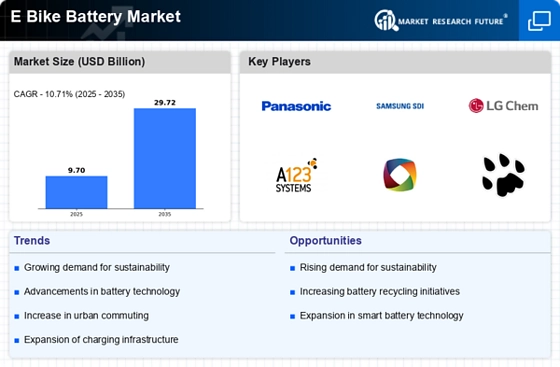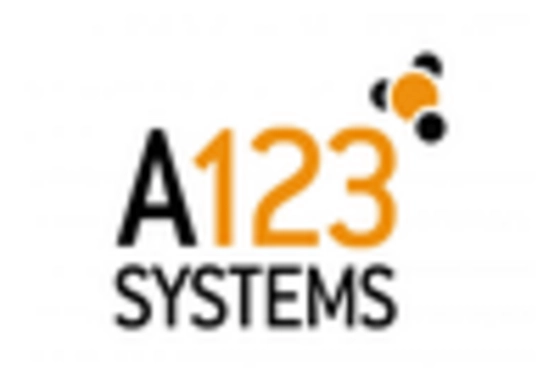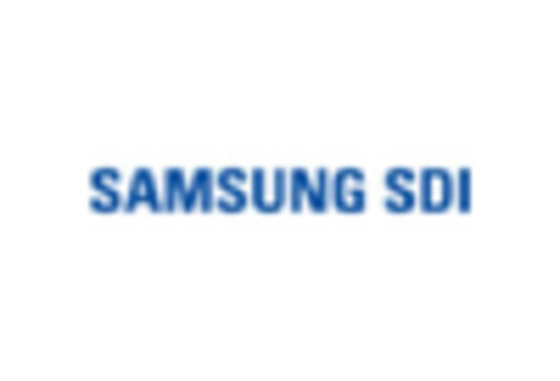Health and Fitness Trends
Health and fitness trends are increasingly driving the E Bike Battery Market. As more individuals prioritize physical activity and outdoor recreation, e-bikes are becoming a popular choice for exercise and leisure. They provide an accessible means for people of varying fitness levels to engage in cycling, promoting a healthier lifestyle. Market Research Future indicates that e-bikes are particularly appealing to older demographics who may seek the benefits of cycling without the physical strain. This growing interest in health and fitness is likely to sustain the demand for e-bikes, thereby enhancing the market for their batteries.
Government Incentives and Regulations
Government incentives and regulations play a crucial role in shaping the E Bike Battery Market. Many governments are implementing policies to promote electric mobility, including subsidies for e-bike purchases and investments in charging infrastructure. For instance, certain regions have introduced tax rebates for e-bike buyers, which can significantly lower the overall cost. Additionally, regulations aimed at reducing emissions from traditional vehicles further encourage consumers to consider e-bikes as a practical alternative. This supportive regulatory environment is likely to enhance the adoption of e-bikes, subsequently increasing the demand for high-performance batteries.
Urbanization and Changing Mobility Patterns
Urbanization and changing mobility patterns are significant factors influencing the E Bike Battery Market. As cities become more congested, residents are seeking efficient and flexible transportation options. E-bikes offer a practical solution for short-distance travel, allowing users to navigate urban environments with ease. The trend towards micro-mobility is gaining traction, with e-bikes being integrated into public transportation systems. This shift is likely to increase the demand for e-bikes and, consequently, for high-capacity batteries that can support longer journeys. The rise in urban populations is expected to further fuel this trend, creating a robust market for e-bike batteries.
Rising Demand for Sustainable Transportation
The increasing demand for sustainable transportation solutions is a primary driver in the E Bike Battery Market. As urban populations grow, the need for eco-friendly alternatives to traditional vehicles becomes more pressing. E-bikes, powered by advanced battery technologies, offer a viable solution to reduce carbon emissions and traffic congestion. Recent data indicates that the e-bike market is projected to grow at a compound annual growth rate of over 10% through the next several years. This trend suggests that consumers are increasingly prioritizing sustainability in their transportation choices, thereby driving the demand for efficient and long-lasting e-bike batteries.
Technological Innovations in Battery Technology
Technological innovations in battery technology are transforming the E Bike Battery Market. Advances in lithium-ion and solid-state batteries are leading to lighter, more efficient, and longer-lasting power sources for e-bikes. These innovations not only improve the overall performance of e-bikes but also enhance user experience by extending range and reducing charging times. Market data suggests that the introduction of next-generation batteries could potentially increase the average range of e-bikes by 30%, making them more appealing to a broader audience. As manufacturers continue to invest in research and development, the market for e-bike batteries is expected to expand significantly.


















Leave a Comment